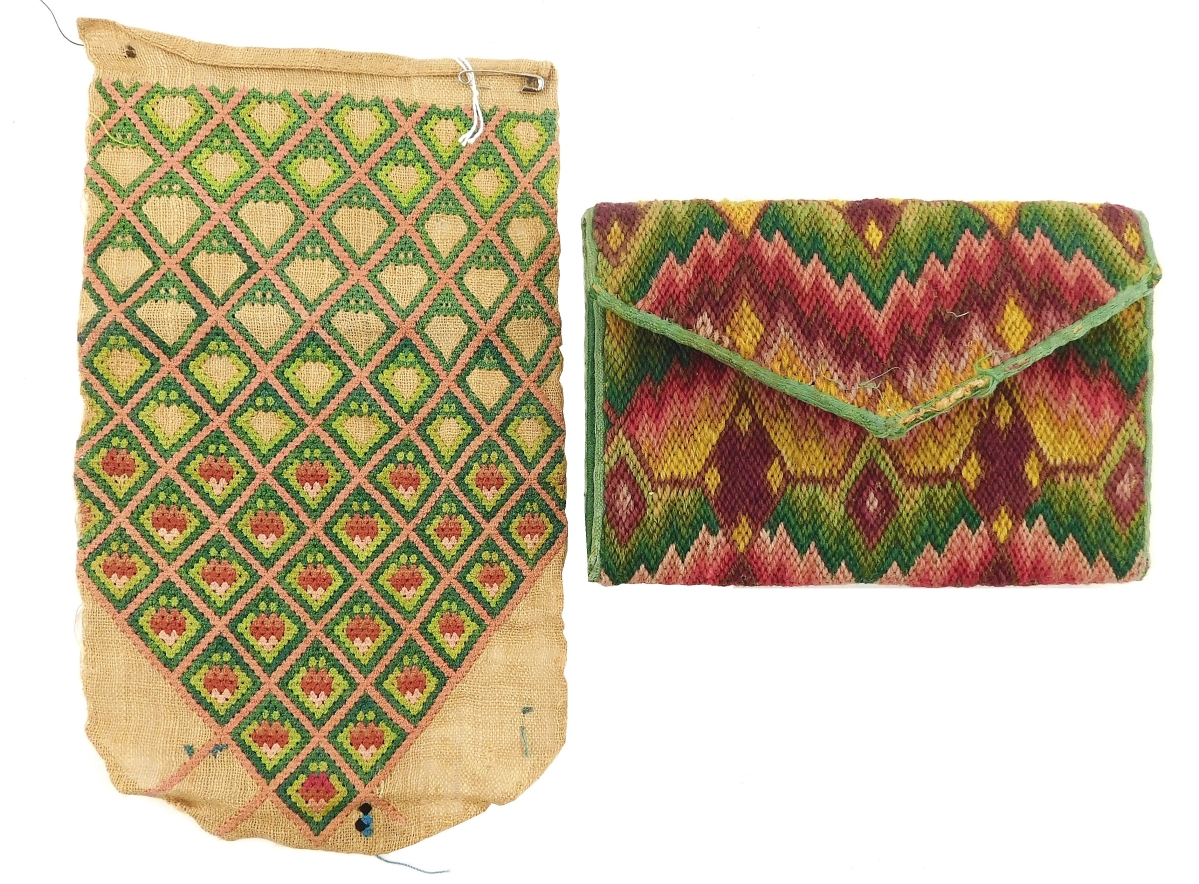
Attributed to Erastus Salisbury Field and inspired by a mezzotint of the “Seventh Plague of Egypt” by the English artist John Martin, “Aaron in a Hailstorm” depicted a port city in a violent storm, viewed from a terrace above, with the figure of Aaron, arms upraised, pointing his staff at the panicked crowds below. It led the sale at $9,000.
Review by W.A. Demers, Photos Courtesy Winter Associates
PLAINVILLE, CONN. – An offering of Connecticut estate material was presented in a live auction by Winter Associates on October 3, with a rare privately owned oil on canvas attributed to Erastus Salisbury Field (American, 1805-1900) from a New Haven estate making an equally rare appearance across the block. Between 1865 and 1880, Field created a series of paintings illustrating the Ten Plagues of Egypt intended as decoration for the walls of the North Congregational Church in North Amherst, Mass. The artist’s deep religious beliefs and strongly held anti-slavery views expressed in these and other biblical works were no doubt the result of his relationship since boyhood with this church. Known as unusually progressive, and with a commitment to biblical text, the church’s congregation included many members of the Amherst Anti-Slavery Society decades before the Civil War which, in 1830, had removed a clause that denied Blacks the privilege of a seat. Inspired by a mezzotint of the “Seventh Plague of Egypt” by the English artist John Martin, Field’s version of “Aaron in a Hailstorm” depicted a port city in a violent storm, viewed from a terrace above, with the figure of Aaron, arms upraised, pointing his staff at the panicked crowds below. It led the firm’s sale, bid to $9,000.
This previously unknown work came to light after the 1984 landmark Erastus Salisbury Field exhibition at the Springfield Museum in Massachusetts, when the painting was brought in for examination by painting conservator Emil G. Schnorr and the exhibition curator and art historian Mary Black, who determined the work to be by Field. It is not known how many examples from the artist’s “Plague Series” were actually produced by the artist. Other examples currently appear to exist only in museums.
Quilts from the New Haven estate performed well, with many going for more than $1,000. From the same estate came a breakout Nineteenth Century Chinese robe, early purses and a William and Mary blanket chest that performed admirably. Estimated just $200/300, the Chinese blue silk embroidered robe with five claw dragon motif in gold thread, 55 inches long from collar to hem, realized $4,500.

Top Asian lot was this Chinese blue silk embroidered robe with five claw dragon motif in gold thread, which realized $4,500.
Fetching $2,280 against a $400/600 estimate was a red and blue (originally green) appliqué cotton quilt in the Whig Rose pattern, circa 1840-60.
A cutout chintz applique quilt, circa 1840, 86 by 82¾ inches, also surpassed its $300/600 estimate, finding a buyer at $1,920, while two pieces, the first a 1794 pocketbook, “Elizabeth Lewis 1794” worked inside along the opening edge, and the second piece an unfinished embroidery, intended to be a pocketbook, circa 1800, silk queen’s stitch on linen, made $2,640, surpassing their $300/500 expectation.
More fine art highlights emerged, with a Stow Wengenroth (American, 1906-1978) “Quiet Hour” lithograph, 10½ by 17 inches, going out at $4,800, and an oil on canvas by Margaret Campbell Macpherson (Canadian, circa 1860-circa 1931), 16½ by 23½ inches, selling for nearly four times its high estimate at $3,900.
Many Asian and tribal items from a Massachusetts collector included bronzes, temple carvings, Native American baskets and Grand Tour items. A Chinese bronze figure of a Daoist immortal, Ming dynasty or later, 14½ inches high, quadrupled its high estimate by gaveling at $2,040. A Native American highlight was an early woven splint basket for berry picking, Northeast Woodlands, 9 inches to top of handle by 13½ inches wide, that took $1,140. It had been featured in Indian Basketry of the Northeastern Woodlands by Sarah Peabody Turnbaugh and William A. Turnbaugh.

These two early pocketbooks, the first a 1794 pocketbook, “Elizabeth Lewis 1794” worked inside along the opening edge, and the second an unfinished example, circa 1800, silk queen’s stitch on linen, made $2,640.
A total of four American painted blanket chests were offered in this sale. One of them, estimated just $200/300, was late Eighteenth/Nineteenth Century with a red finish and iron bootstrap hinges, measuring 20 by 44 by 17 inches. It brought $1,040.
Another American furniture highlight came in the form of a banister back armchair that left the gallery at $1,200, a more than fourfold premium over its $275 high estimate. With arched crest over four vertical stiles, it was 49 inches high.
Prices given include the buyer’s premium as stated by the auction house. For information, www.auctionsappraisers.com or 860-793-0288.















